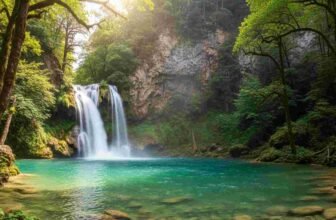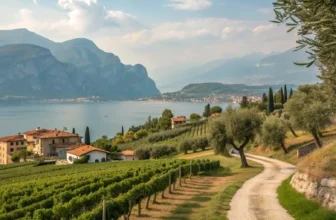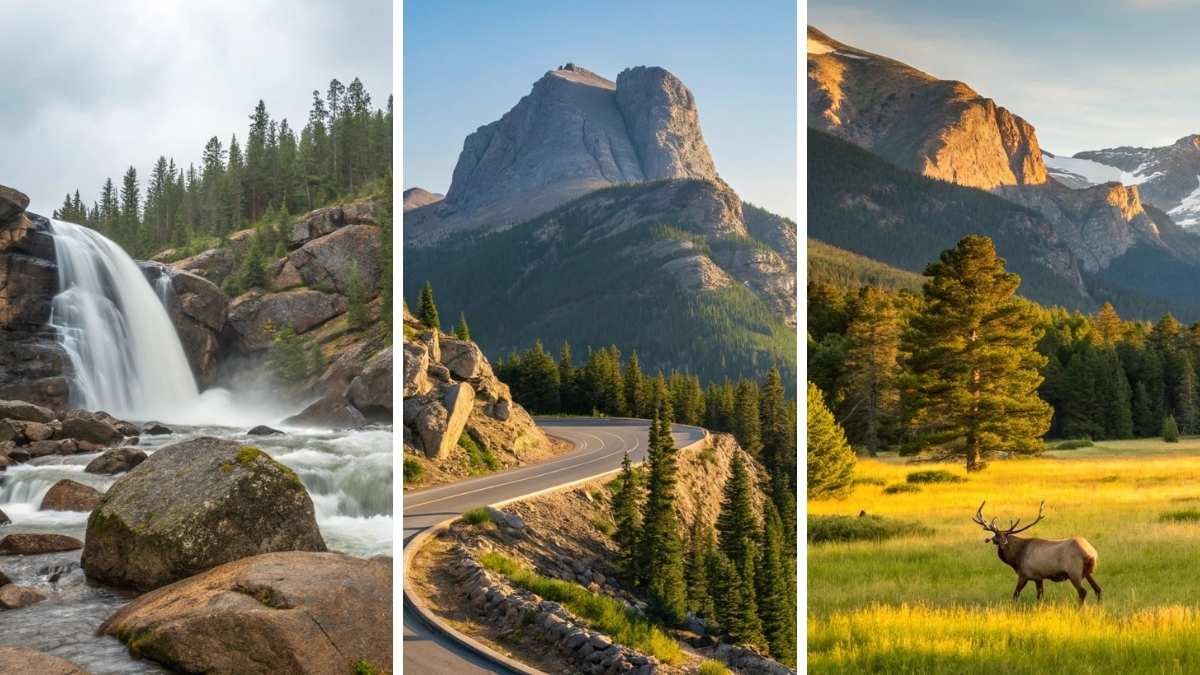
There’s something about crisp mountain air that resets everything. The noise in your head fades, your breath slows, and suddenly, the world feels wider than your worries. That’s what a first trip to this iconic national park offers—not just scenery, but a sense of perspective.
Whether you’re winding along cliffside roads or standing still while a wild elk strolls by, it doesn’t take long to realize: this place moves at its own pace, and you’re lucky just to witness it. If you’re heading here for the first time, these handpicked stops will help you soak in every wild, humbling moment.
1. Trail Ridge Road Scenic Drive
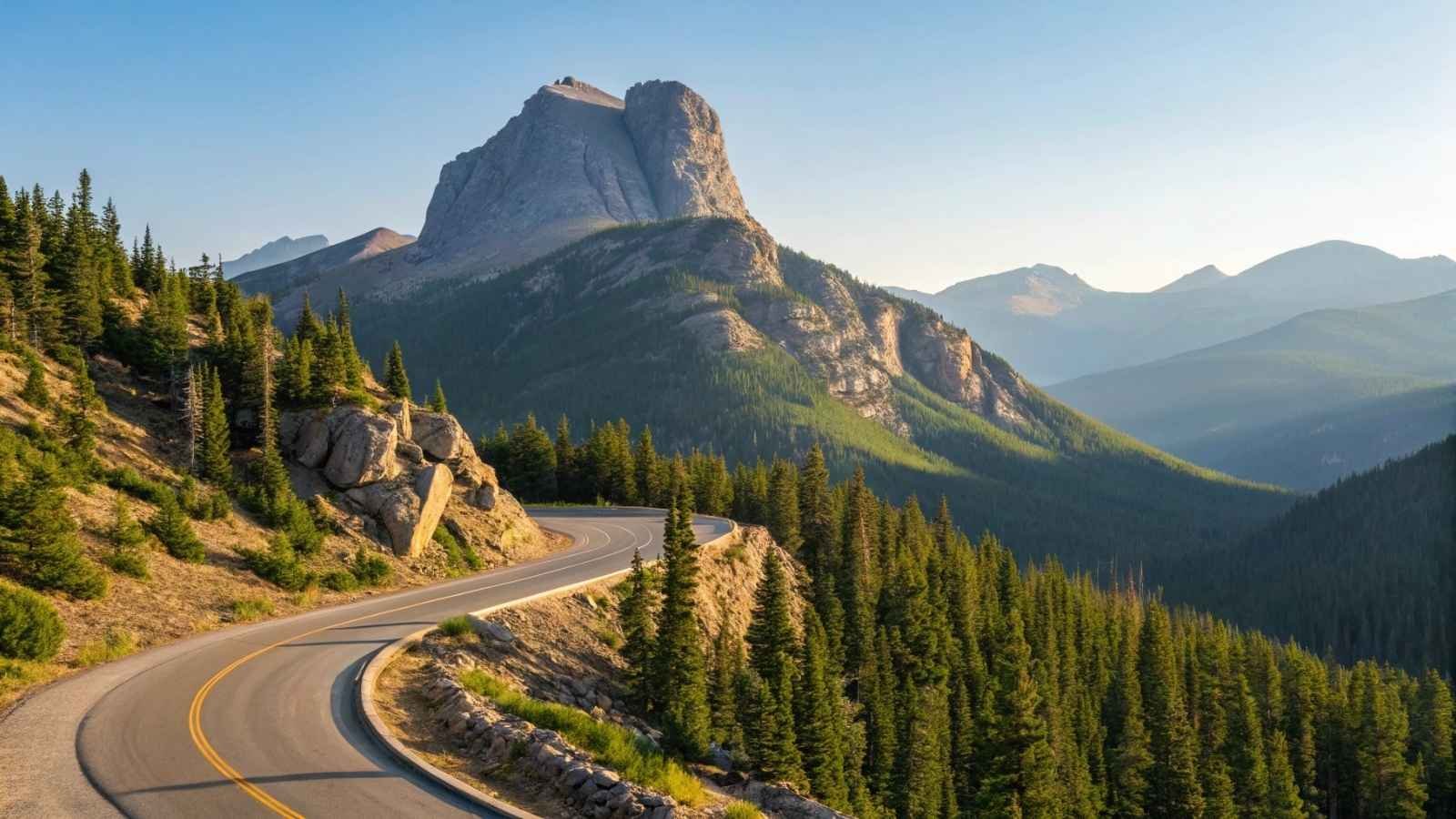
There’s no better way to get a sweeping overview of Rocky Mountain National Park than cruising along Trail Ridge Road, the highest continuous paved highway in the U.S. It climbs to a jaw-dropping elevation of 12,183 feet, offering uninterrupted views of alpine tundra, jagged peaks, and wildlife-rich valleys. You’ll drive above the tree line, where marmots sunbathe on rocks and snowbanks linger well into summer.
This road is more than just a way to get from point A to point B—it’s a journey through multiple ecosystems. Every few miles reveals a different kind of landscape: wildflower meadows, spruce-fir forests, and vast open tundra that feels like another planet. There are numerous pullouts and short trails, so you can hop out and explore without a major time commitment.
What makes Trail Ridge Road especially magical for first-timers is that you get a little bit of everything: scenery, wildlife, altitude, and perspective—all from the comfort of your car. Whether you only drive partway or commit to the full 48-mile route between Estes Park and Grand Lake, this is a must-do.
Quick Facts:
- Best Months to Visit: Late June through mid-October (closed in winter due to snow)
- Wildlife You Might See: Elk, marmots, bighorn sheep
- Drive Time: 2-3 hours one way with stops
- Elevation Gain: Over 4,000 feet
- Pro Tip: Stop at the Forest Canyon Overlook—the views will floor you
2. Bear Lake Loop Hike
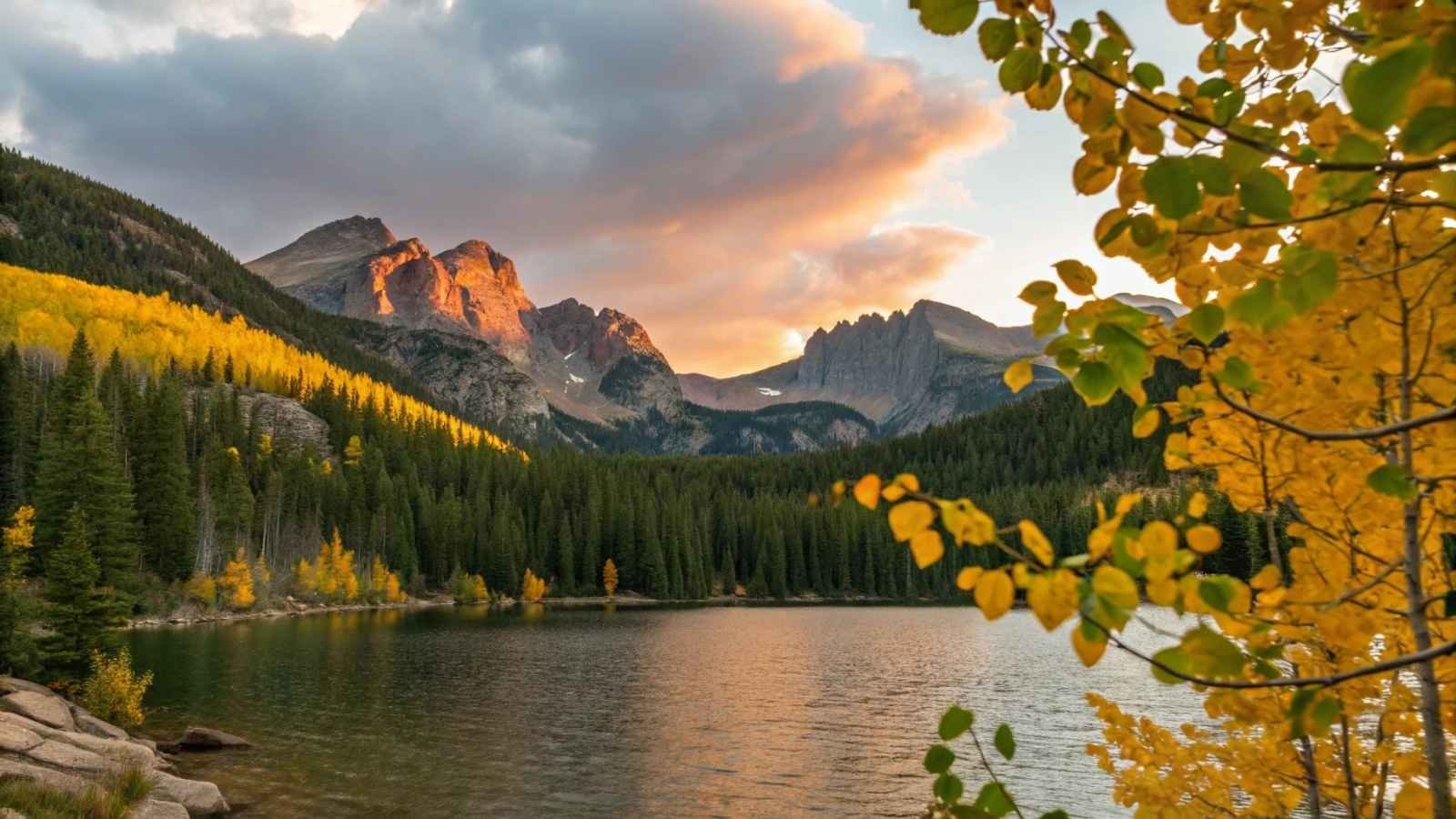
For a first-timer, Bear Lake Loop is like opening the perfect intro chapter to a national park storybook. It’s short, sweet, and incredibly scenic, with a flat 0.8-mile loop that wraps around a reflective alpine lake framed by snow-dusted peaks. You get all the “Rocky Mountain” feels in less than an hour.
What makes Bear Lake special is that it’s accessible yet still wild. The moment you step onto the trail, the buzz of the parking lot fades into the rustle of pine trees and the calls of chickadees. The lake mirrors iconic peaks like Hallett Peak and Flattop Mountain, especially during early morning light. If you’re lucky, you might spot mule deer along the trail’s edge or see trout flicker beneath the surface.
This is also a perfect jumping-off point if you want to extend your adventure. The trail connects to longer hikes like Nymph Lake, Dream Lake, and Emerald Lake, so you can make it a choose-your-own-level kind of day.
Quick Facts:
- Best Time to Visit: May through October; arrive early morning to avoid crowds
- Trail Length: 0.8 miles (loop)
- Elevation Gain: Minimal; good for all skill levels
- Accessibility: Wheelchair accessible with some assistance
- Pro Tip: Visit at sunrise for perfect reflections and far fewer people
3. Alberta Falls Hike

Few hikes deliver as much reward for so little effort as the Alberta Falls Trail. This moderate 1.6-mile round trip takes you through pine-scented forests and alongside a rushing creek, leading to a roaring 30-foot waterfall crashing down a granite chute. It’s dynamic, photogenic, and just the right length for families or those easing into high-altitude hiking.
Starting from the Glacier Gorge trailhead (or Bear Lake if parking is tight), the path meanders gently upward through aspen groves and shaded pines. The sound of the falls grows louder as you approach, until you’re suddenly standing in front of a misty, dramatic cascade that feels straight out of a movie. It’s especially beautiful in late spring or early summer, when the snowmelt gives it some serious power.
The rocks near the base of the falls are a popular place to sit and soak it all in. Don’t be surprised if you end up lingering longer than planned. And if your legs are feeling strong, you can continue on to Mills Lake or The Loch for even more alpine drama.
Quick Facts:
- Best Months to Visit: June through September for peak waterfall flow
- Trailhead: Glacier Gorge (shuttle access recommended)
- Distance & Difficulty: 1.6 miles round trip, easy to moderate
- Restrooms & Parking: Limited—use the shuttle if possible
- Pro Tip: Go early or late in the day for fewer crowds and better photos
4. Moraine Park Wildlife Viewing
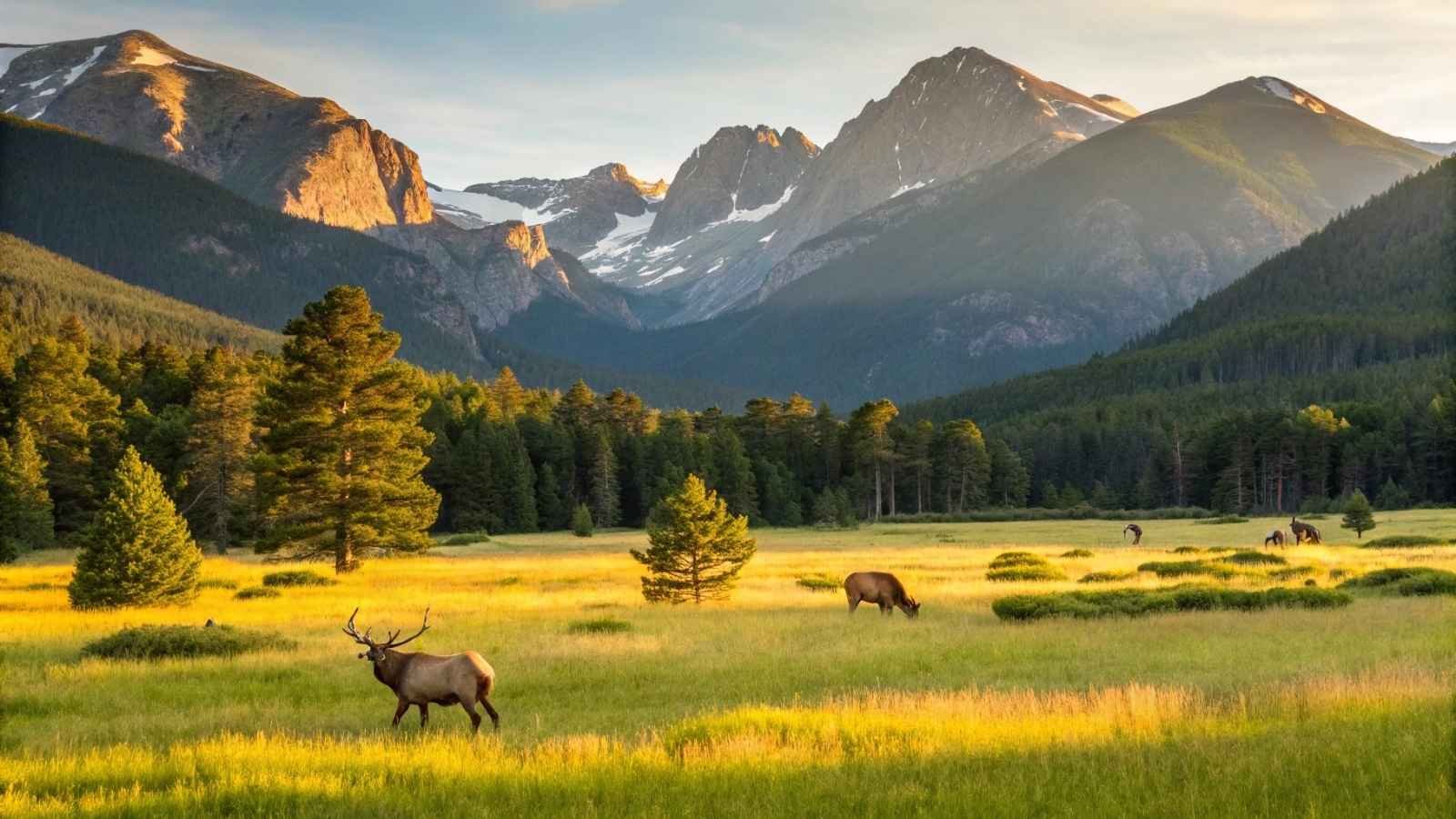
Moraine Park is like an open-air theater where the stars are elk, coyotes, mule deer, and the occasional black bear. It’s one of the most reliable and accessible places in the park for wildlife spotting, especially during the golden hours of dawn and dusk. The valley’s wide-open landscape makes animals easy to spot from a distance—and safe to view.
In autumn, this meadow becomes the scene of the famous elk rut, when bull elk bugle dramatically and battle for dominance. But even in summer, herds graze peacefully while photographers with long lenses line the roadside. You can watch from your car or stroll along the Cub Lake Trailhead for a more immersive experience.
Moraine Park isn’t just about animals—it also offers panoramic views of towering peaks and winding rivers. Bring binoculars, a thermos, and patience. Watching a herd move across the valley with Longs Peak in the background feels like a true Colorado moment.
Quick Facts:
- Best Times for Wildlife: Dawn and dusk, year-round; best in fall (September–October)
- Easiest Viewing Spot: Along Bear Lake Road or the pullouts in Moraine Park
- Access: Easy from Estes Park; park at the Moraine Park Discovery Center
- Wildlife Seen Most Often: Elk, mule deer, coyotes, ground squirrels
- Pro Tip: Stay quiet and bring binoculars—this place rewards patience
5. Emerald Lake Trail

If you want the “greatest hits” hike of Rocky Mountain National Park, the Emerald Lake Trail is your track. At just 3.2 miles round trip, this trail delivers four alpine lakes, glacier-carved peaks, wildlife sightings, and evergreen forests. It’s one of the most beloved day hikes for good reason.
Starting at Bear Lake, the trail winds upward past Nymph Lake, a lily-pad-dotted pond, then leads to the dreamy, often-reflective Dream Lake. The final push to Emerald Lake rewards you with dramatic views of Hallett Peak and Flattop Mountain, towering over a stunning emerald-colored lake fed by Tyndall Glacier runoff. It’s a trail that delivers new visual rewards with every step.
Despite its popularity, the scenery feels serene, especially if you start early or during shoulder seasons. Just be prepared for thinner air and some elevation gain. Take it slow, and this hike will easily become one of your top travel memories.
Quick Facts:
- Best Months to Visit: June through October
- Trail Length: 3.2 miles round trip, moderate difficulty
- Elevation Gain: Around 700 feet
- Trailhead: Bear Lake (arrive before 7 a.m. or take the shuttle)
- Pro Tip: Pack layers—even in summer, it gets chilly near Emerald Lake
6. Sprague Lake Loop
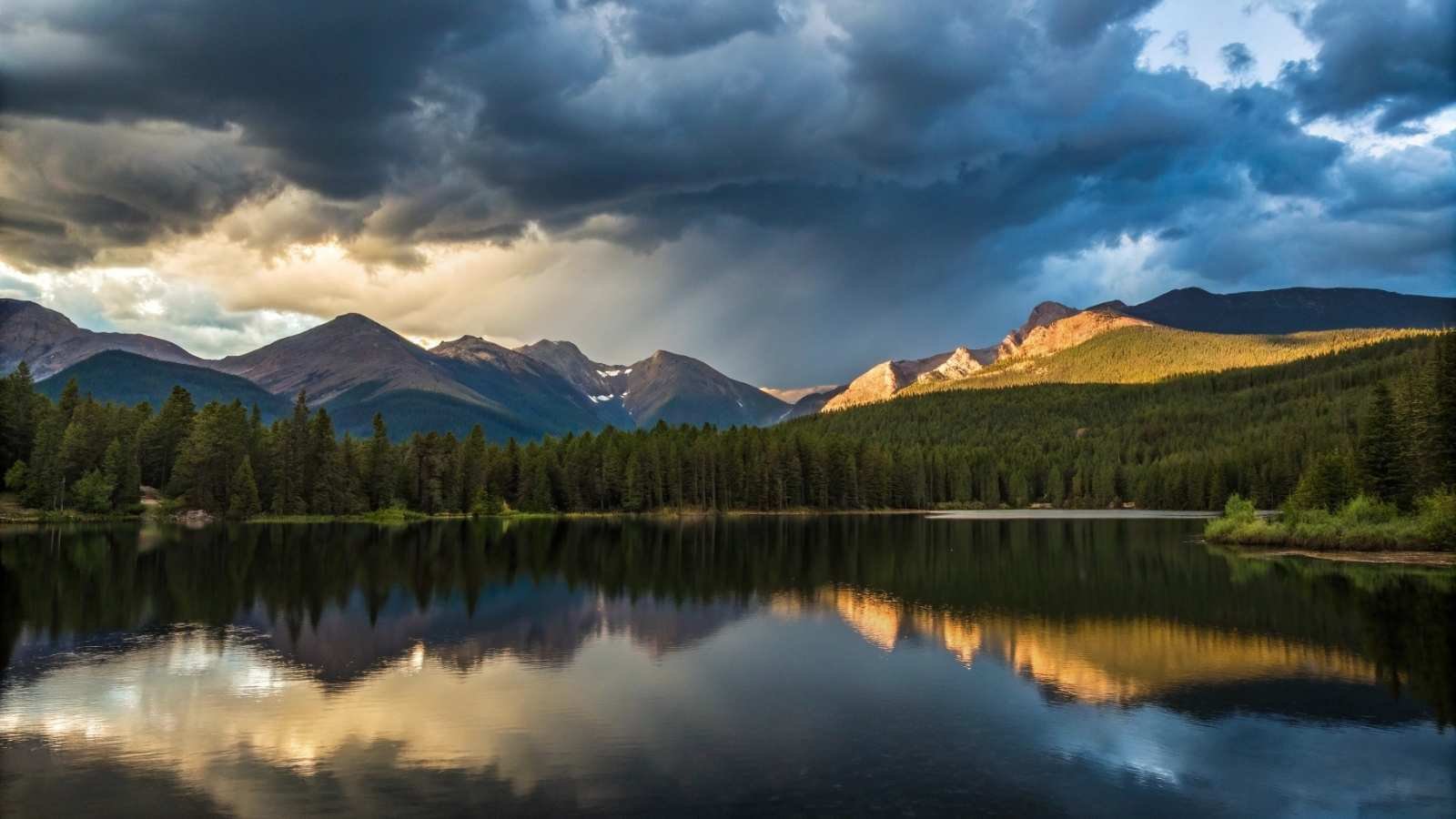
If you’re after a peaceful walk with postcard views and little elevation, Sprague Lake is your go-to. This 0.5-mile flat loop circles a shimmering alpine lake framed by peaks like Hallett and Flattop, and it’s one of the park’s most accessible trails—ideal for families, strollers, or travelers adjusting to the altitude.
Sprague Lake is especially beloved by photographers. Early morning is when the water is still, the reflections are perfect, and the light filters through the trees just right. You might spot ducks gliding across the surface, or a moose munching along the far bank if you’re lucky.
The area also has picnic tables and benches, so it’s a great place to slow down. Whether you’re sipping coffee lakeside or snapping a time-lapse, this spot makes you feel like you’re truly in the Rockies, without breaking a sweat.
Quick Facts:
- Trail Type: Flat 0.5-mile loop
- Best Time to Visit: Early morning for reflections and wildlife
- Accessibility: Fully wheelchair- and stroller-friendly
- Parking: Ample, but fills up midday
- Pro Tip: Great sunrise spot for beginner photographers
7. Old Fall River Road Drive
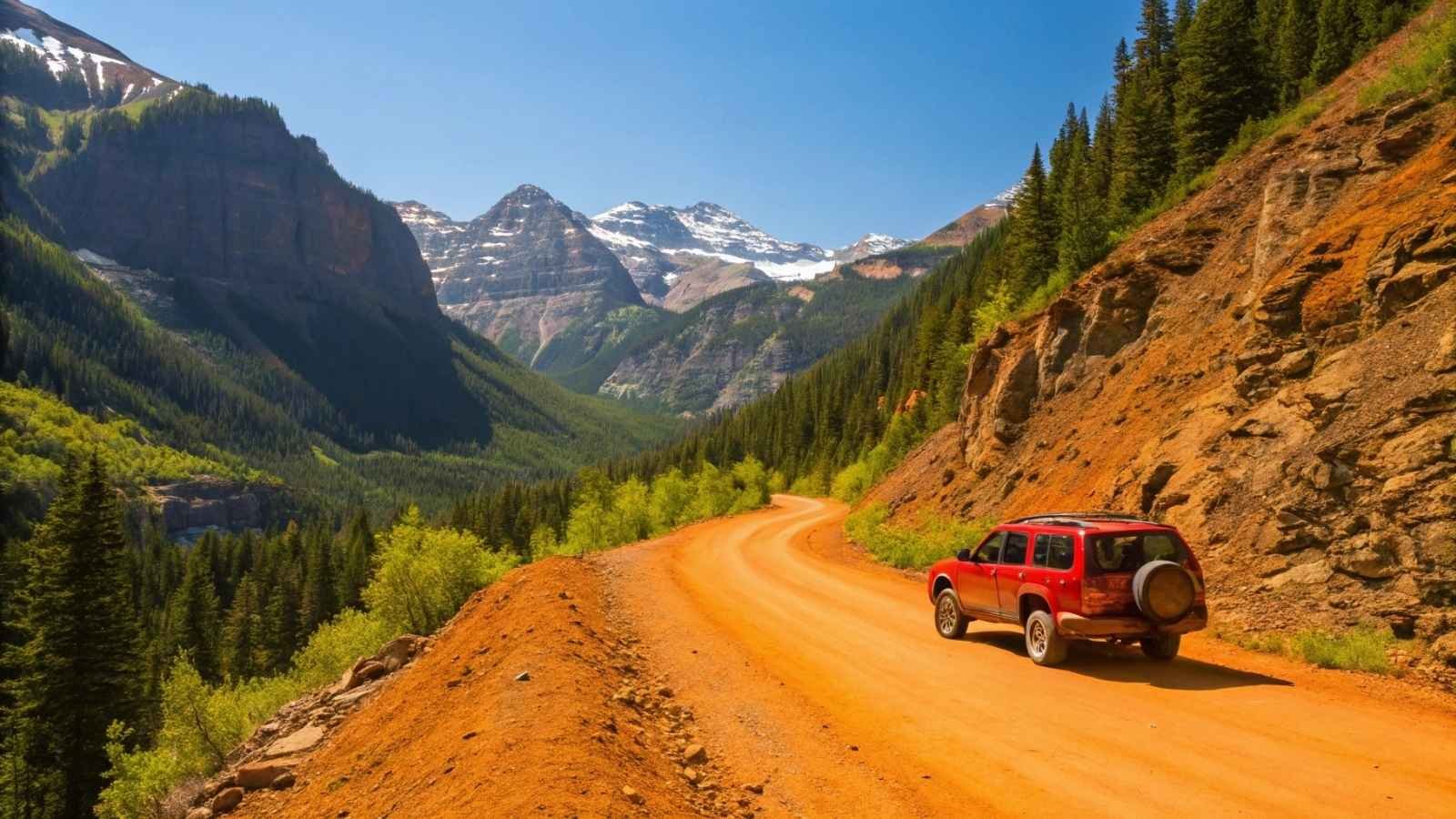
Unlike the sweeping vistas of Trail Ridge Road, Old Fall River Road offers something a bit more intimate—a one-way gravel road that winds tightly through forested canyons and past hidden waterfalls. It was the park’s original auto route and still feels like a vintage mountain adventure.
This narrow, 11-mile route begins near Horseshoe Park and climbs steeply to the Alpine Visitor Center. Along the way, you’ll pass Chasm Falls, a tucked-away cascade perfect for a short leg-stretcher. The unpaved road keeps things slow, which is exactly the point—it’s more about the journey than the destination.
Driving this road gives you a different side of the Rocky Mountains: more rugged, more personal, and far less crowded than its better-known sibling. It’s ideal for those craving a quieter encounter with the park’s raw beauty.
Quick Facts:
- Open Season: July through September, weather permitting
- Vehicle Restrictions: No trailers or oversized vehicles
- Drive Time: About 1.5 to 2 hours
- Must-See Stop: Chasm Falls—short hike, great photo op
- Pro Tip: Combine with Trail Ridge Road for a scenic loop
8. Deer Mountain Trail
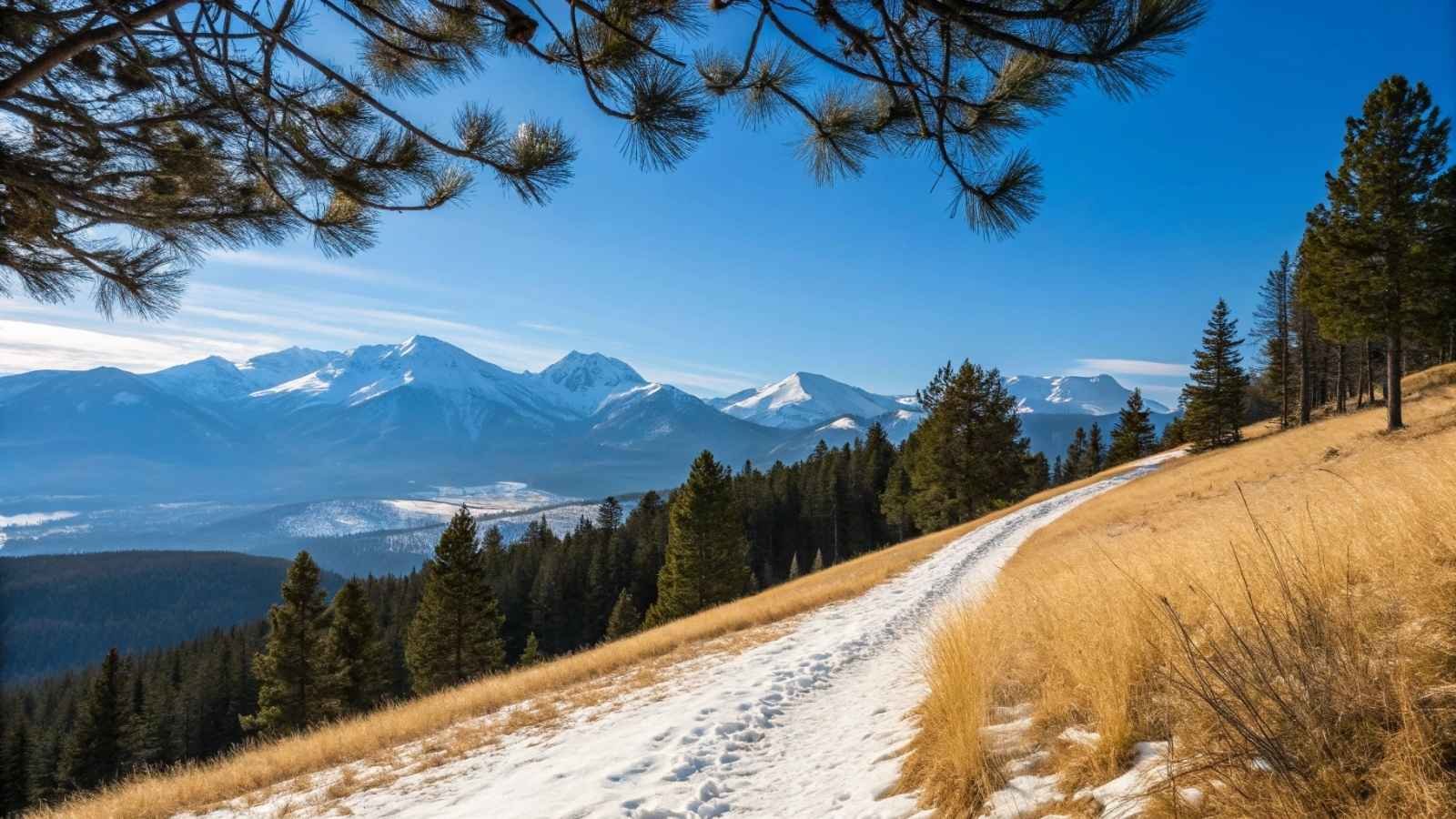
Want panoramic mountain views without a full-day commitment? Deer Mountain Trail is your answer. This moderate 6-mile round-trip climb steadily to a summit that rewards you with sweeping vistas of Longs Peak, Estes Park, and Moraine Park—all from a manageable 10,000 feet.
The trail is well-maintained and switchbacks gently through pine forests before breaking into open tundra. Hikers often spot elk along the route, and wildflowers dot the path during summer. It’s a satisfying hike that gives you summit bragging rights without extreme altitude gain.
It’s also a great training hike for anyone considering bigger climbs later in the trip. And that summit lunch spot? Arguably, one of the best places to eat a peanut butter sandwich in the entire park.
Quick Facts:
- Trail Length: 6 miles round trip
- Elevation Gain: About 1,400 feet
- Difficulty: Moderate
- Best Season: Late spring through early fall
- Pro Tip: Start in the morning to avoid thunderstorms near the summit
9. Holzwarth Historic Site (Moose Spotting)
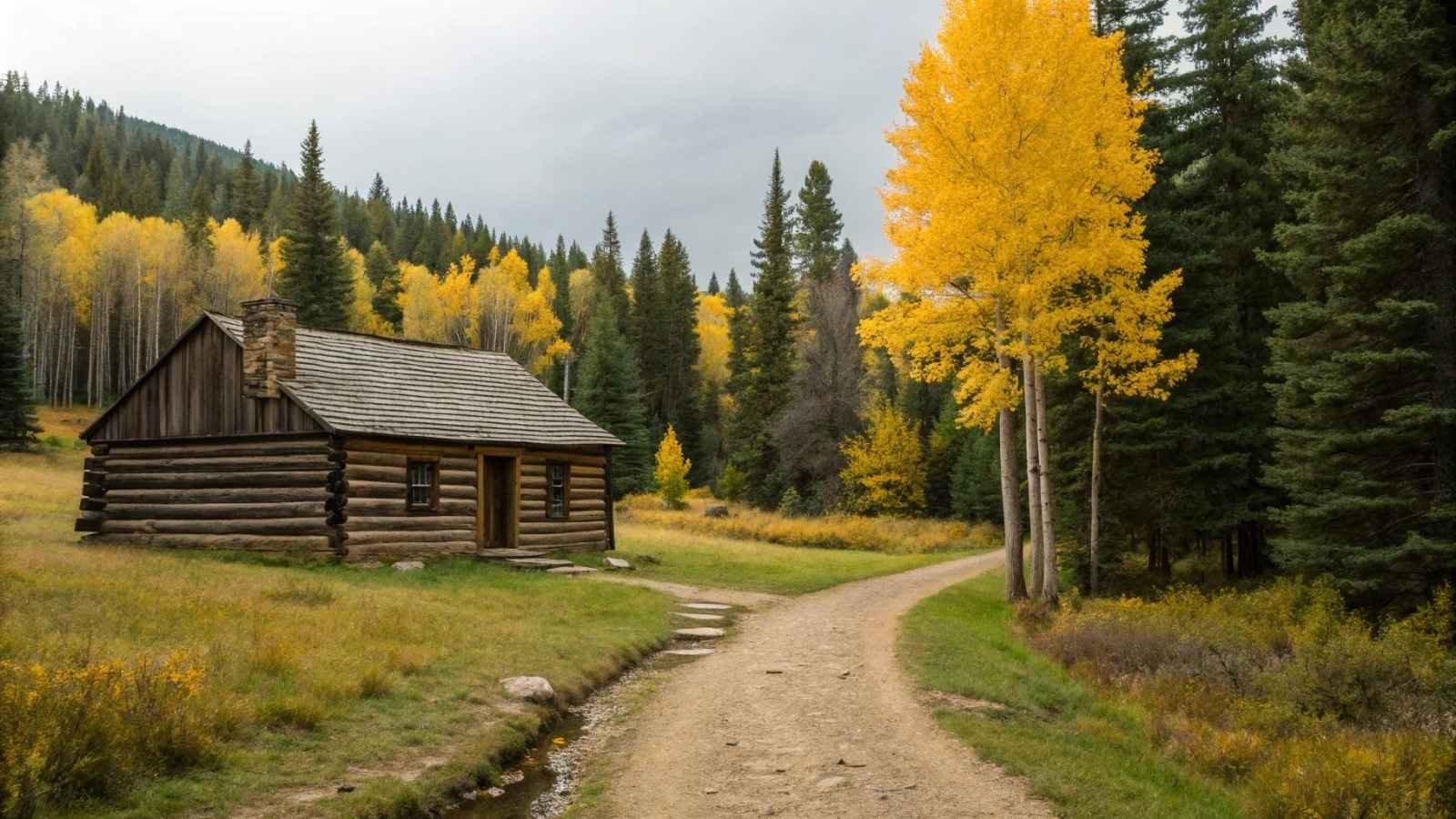
Most people come to Rocky Mountain for the mountains, but if you’re into moose, your best bet is the Holzwarth Historic Site on the park’s west side. Nestled in the Kawuneeche Valley, this quiet area is home to wide meadows, the Colorado River’s headwaters, and some of the park’s best moose habitat.
While the rustic cabins of the 1920s-era dude ranch are interesting in their own right, most visitors are drawn here for wildlife. Moose are often spotted grazing in the willows or cooling off in the stream. The flat 1-mile walk from the parking lot to the site gives you plenty of time to scan the landscape.
This side of the park is less traveled than the popular eastern entrances, so it’s a great day trip if you’re staying near Grand Lake or doing a full park drive. Plus, the historic buildings offer a glimpse of what life was like in the park a century ago.
Quick Facts:
- Best Time for Moose: Early morning or dusk, especially in summer
- Trail Type: Easy 1-mile round trip
- Location: West entrance, near Grand Lake
- Facilities: Small ranger station, interpretive signs
- Pro Tip: Bring binoculars and a quiet attitude—moose are shy!
10. Alpine Visitor Center & Tundra Viewpoints
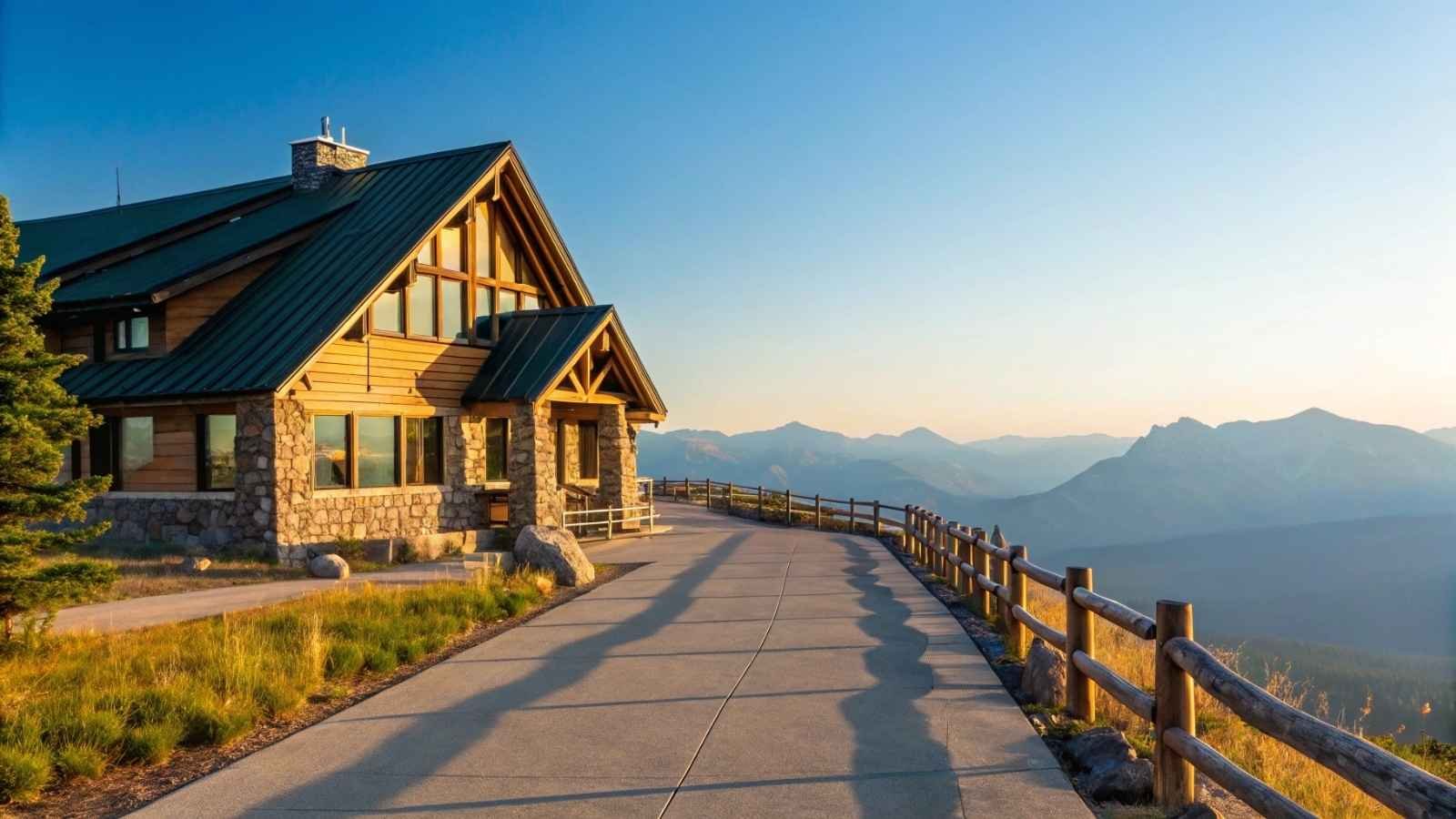
At 11,796 feet, the Alpine Visitor Center is the highest facility of its kind in the entire National Park System. Whether you’re stopping in for a cup of cocoa or catching your breath from the thin air, this is a must-visit point along Trail Ridge Road. But don’t just go inside—step out onto the Alpine Ridge Trail, also known as “Huffers Hill,” for some of the most surreal views you’ll ever see.
The short but steep trail climbs to a 360-degree lookout over the Never Summer Mountains, and if you’ve never walked across tundra terrain before, prepare to be amazed. The landscape looks almost arctic, with lichen-covered rocks, tiny blooming wildflowers, and skies that feel a finger’s reach away.
You don’t need to be a hiker or a mountaineer to experience the high alpine zone here. Just a few minutes outside your car and you’ll understand why this stop is such a highlight—it’s where Earth meets sky, quite literally.
Quick Facts:
- Elevation: 11,796 feet
- Trail Option: Alpine Ridge Trail – 0.6 miles round trip, steep but short
- Best Season: July to early October
- Access: Along Trail Ridge Road
- Pro Tip: Dress warmly—even in summer, the wind can chill to the bone



